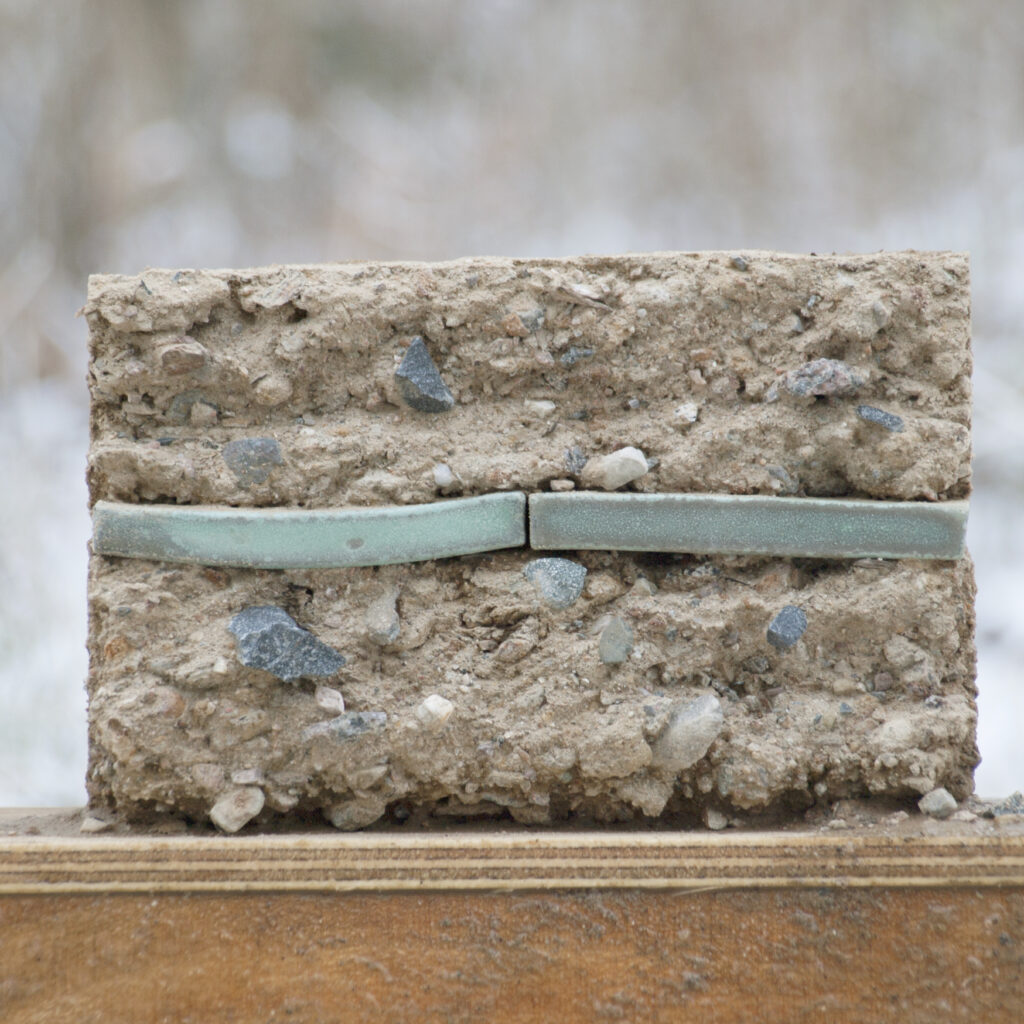Erosion Tests
I compacted the earth manually with a pole inside a wooden form. The erosion checks were inserted halfway up, 5-10 mm deep from the surface.
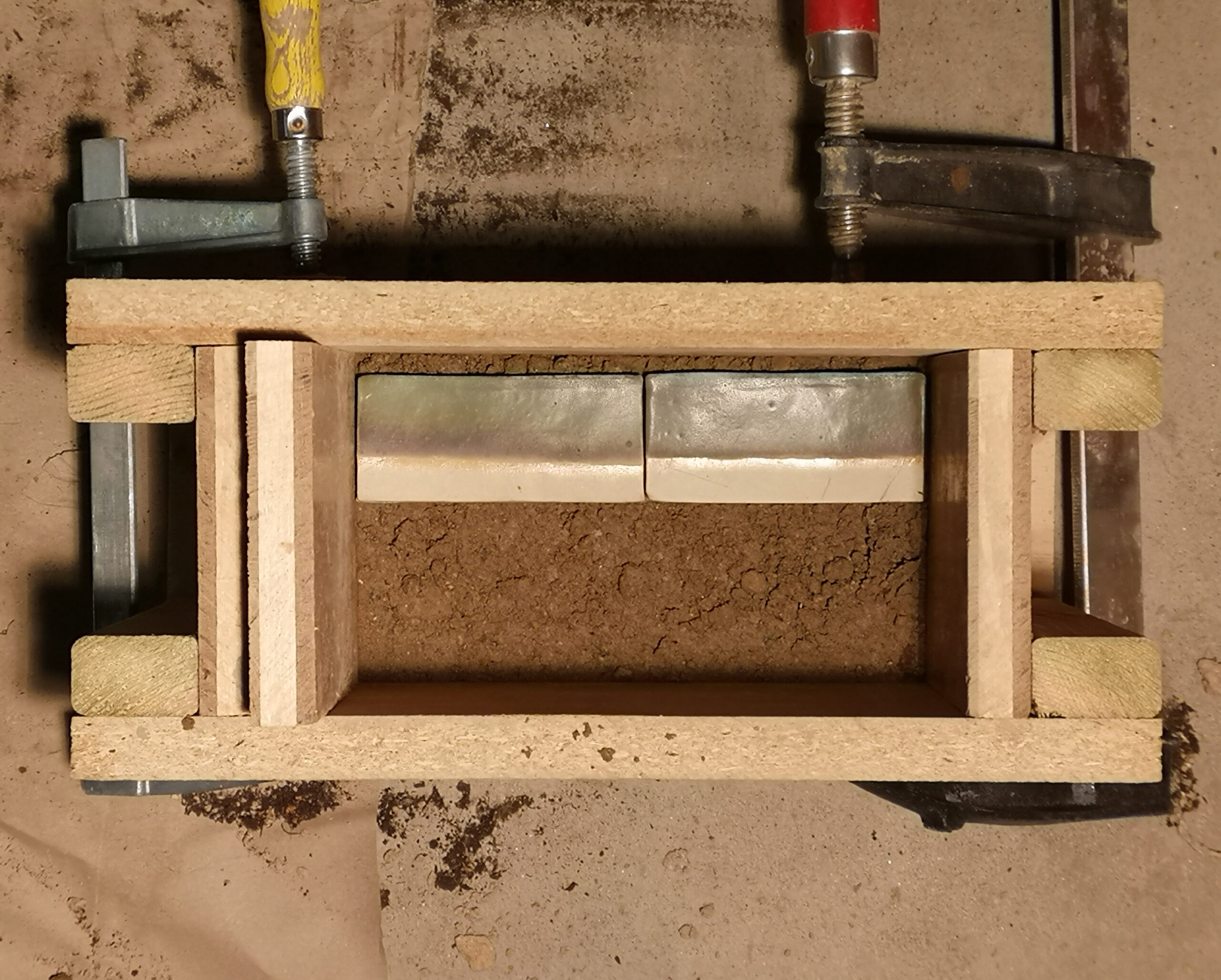
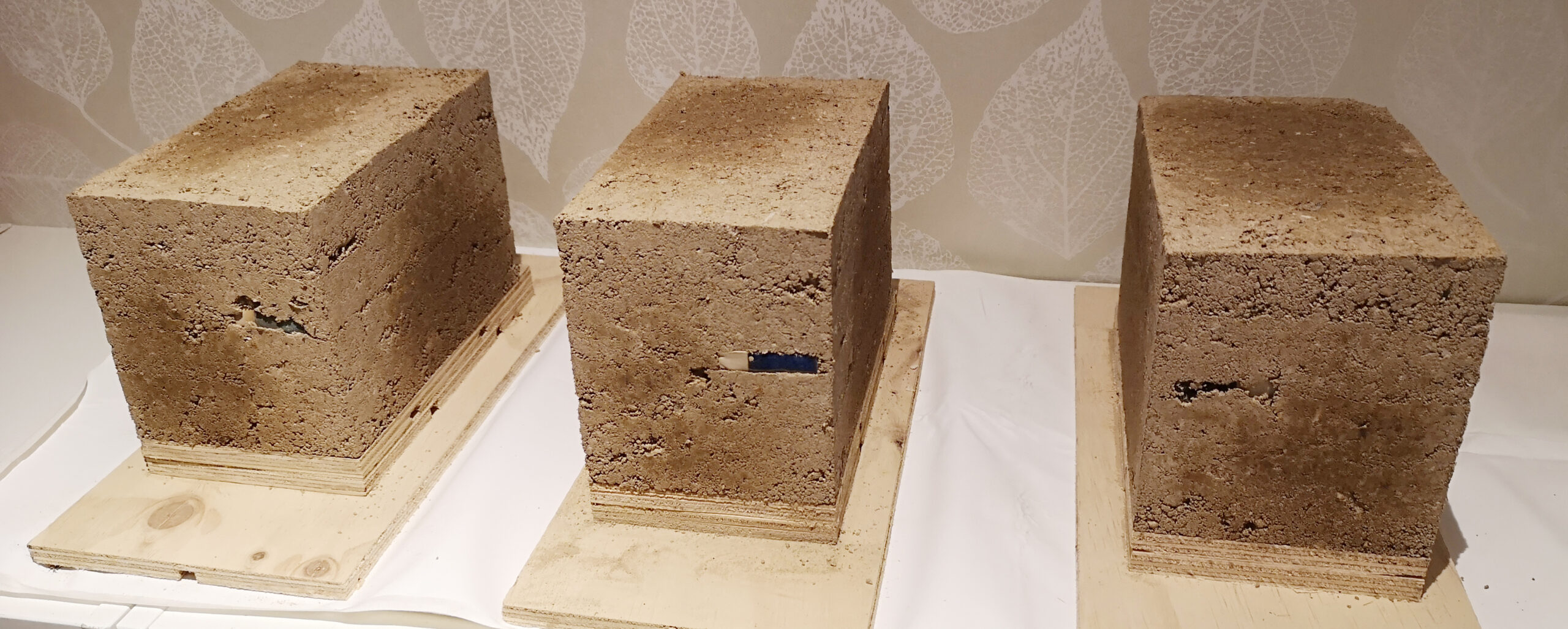
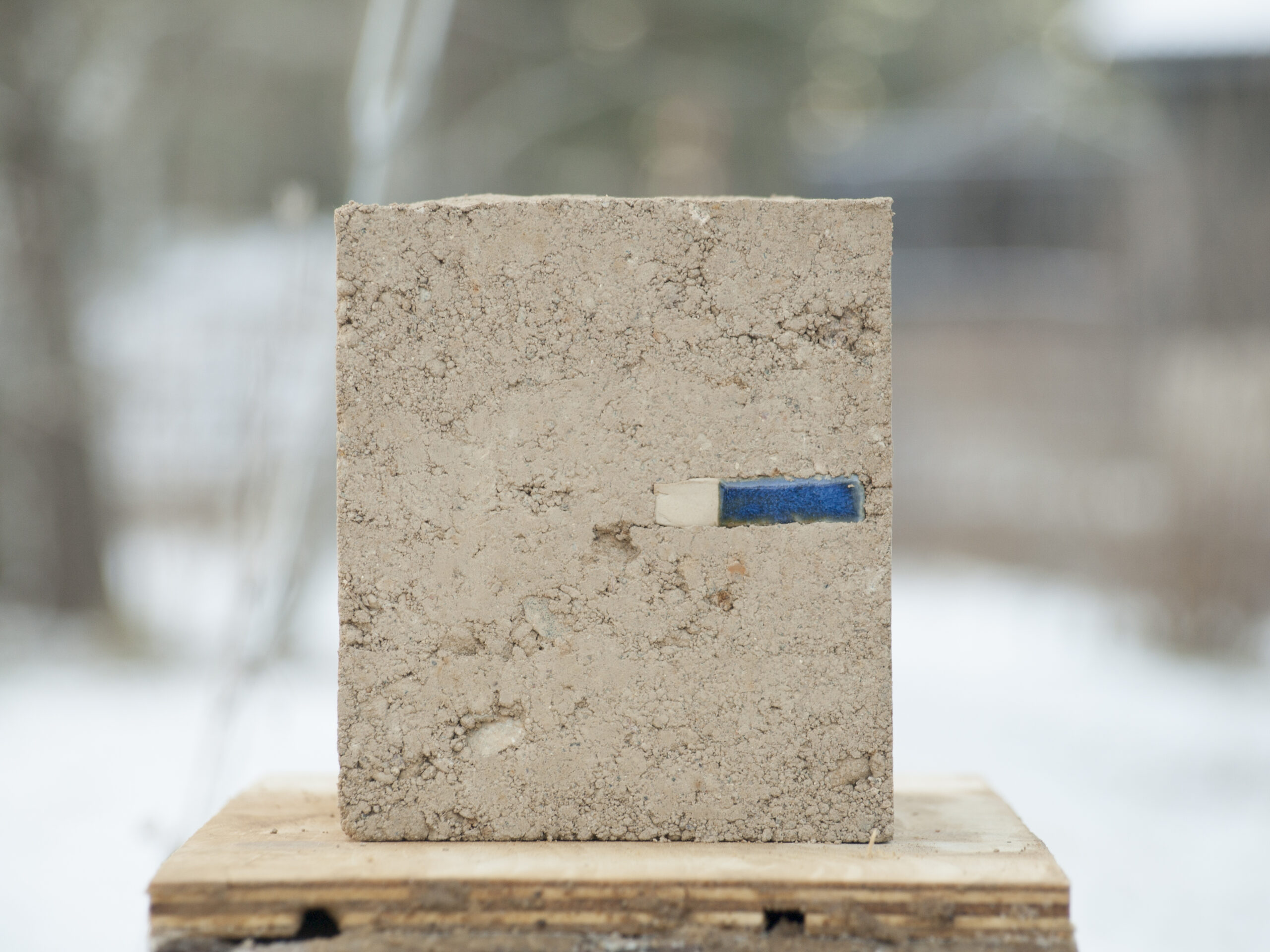
After the cubes had dried and hardened inside I took them out again to perform the erosion tests. The erosion that normally would take decades was simulated with the help of high pressure water in a few minutes.
The photomontage below is showing in detail how the appearance of a rammed earth façade could change as erosion progress. It can be seen as a timeline for a façade, showing it newly built to the left and after many years of erosion to the right. But the whole image could also belong to the same moment, in a scenario where the left part is more protected, for example by a balcony or roof. The centre is showing how the erosion checks are just starting to become visible, appearing like treasures in the ground.
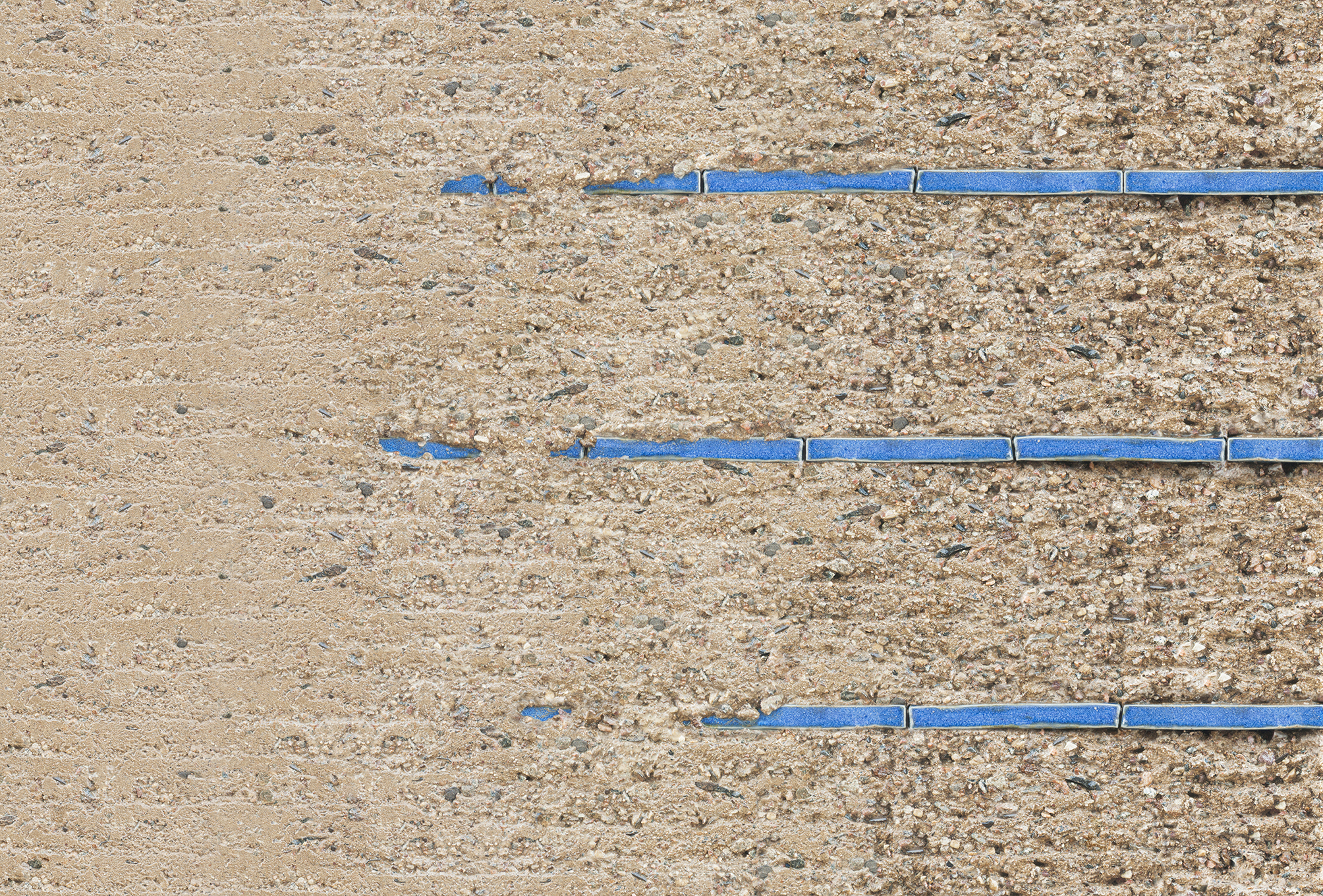
The erosion checks are ornaments on the façade that grow over time. Exactly how this pattern would look like is hard to predict since it depends on the weather, but it could be controlled to some extent with protruding roofs for example.
The façade below is also showing how the design principles of rammed earth could be implemented. Narrow or arched windows are prefered to avoid large lintel beams (Erden, 2021). The bigger windows have instead been placed in wooden sections where the vertical loads are smaller.

